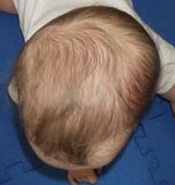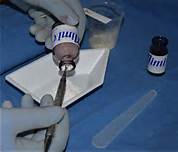
Unlike more severe skull deformities like craniosynostosis, plagicephaly is not generally viewed as severe enough in many cases to warrant major intracranial surgery through bone removal and reshaping. Flat areas on the back of the head are viewed as ‘cosmetic’ with no medical indication for surgical intervention…as viewed from the typical craniofacial surgical perspective. Certainly it is hard if not impossible to justify a major operation with a long scalp scar and need for blood trasnfusions to correct a mild to moderate occipital skull shape problem in a young child.
It is common in my practice to correct a wide variety of skull shape issues in adult with ‘aesthetic craniofacial’ techniques. This essentially means two fundamental approaches that differ from traditional craniofacial surgery methods…a very limited scalp scar and correction of the deficient skull with onlay bone cement methods. This requires experience in working with a variety of alloplastic cranioplasty materials and doing so with limited incisional access. This has proven to be a very effective approach with good skull contour improvements.

Having done a small series of hydroxyapatite cement skull augmentations in children (under age 5) for flat spots on the back of the head, it is an effective procedure with a very quick recovery. Most scalp incisions have been less than 5 to 6 cms in length. It is a challenge to work with bone cements through such a small opening but years of experience with the material have helped tremendously. For the very motivated parent(s), treatment of mild to moderate plagiocephaly can be vey safely done at a young age.
Dr. Barry Eppley
Indianapolis, Indiana


